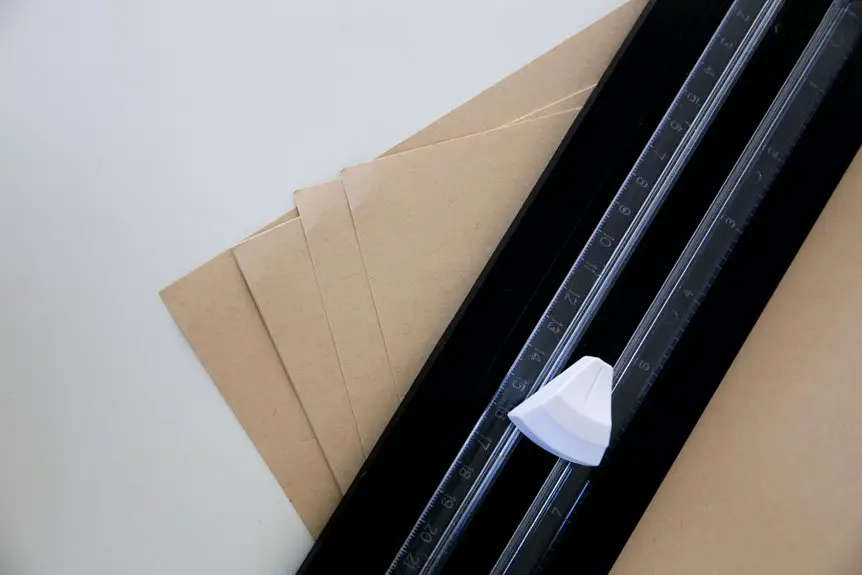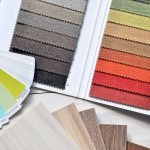You’ll find that nonwoven materials are fabrics made by bonding fibers without weaving, offering lightweight, flexible, and functional options like filtration and insulation. They come in types like spunbond and meltblown, made through mechanical, thermal, or chemical processes. You’ll use them in healthcare, automotive, construction, and hygiene products due to their versatility and cost-effectiveness. While offering many benefits, they also pose sustainability challenges. There’s much more to explore about their innovations and eco-friendly trends.
Table of Contents
Key Takeaways
- Nonwoven materials are engineered fabrics bonded without weaving, offering breathability, strength, and specialized functions like filtration and insulation.
- Common manufacturing methods include dry, wet, and spunbond formation with mechanical, thermal, or chemical bonding techniques.
- Key applications span healthcare, automotive, construction, hygiene, agriculture, filtration, and consumer products.
- Advantages include versatility, cost-effectiveness, and sustainability, though they may have lower strength and abrasion resistance than woven fabrics.
- Innovations involve smart textiles, eco-friendly materials, advanced bonding technologies, and customization for specific industrial needs.
Understanding Nonwoven Materials: Definition and Characteristics
Nonwoven materials are fabrics made by bonding fibers together without weaving or knitting. When you use nonwoven fabrics, you’ll notice they differ from traditional textiles in structure and performance. They’re engineered for specific functions like filtration, insulation, or absorbency.
Because the fibers aren’t woven, these materials can be lightweight, flexible, and sometimes disposable. You’ll find nonwovens in various industries, from medical supplies to automotive parts. Their characteristics include breathability, strength, and resistance to liquids or chemicals, depending on the fibers and bonding methods used.
Understanding these traits helps you select the right nonwoven fabric for your needs, ensuring performance and durability in your applications. Nonwovens offer versatility that woven fabrics often can’t match.
Manufacturing Processes of Nonwoven Fabrics
Although the fibers aren’t woven or knitted, the way they’re bonded plays a crucial role in the fabric’s final properties.
When you manufacture nonwoven fabrics, you start by laying fibers into a web through processes like dry, wet, or spunbond formation.
Next, you bond these fibers using mechanical, thermal, or chemical methods.
Mechanical bonding, such as needle punching or hydroentangling, physically entangles fibers for strength.
Thermal bonding melts fiber surfaces to fuse them together, creating durability without added adhesives.
Chemical bonding uses binders to glue fibers in place, enhancing flexibility or water resistance.
Each bonding method affects texture, strength, and performance, so you’ll choose based on the fabric’s intended use.
Understanding these processes helps you appreciate how nonwoven materials meet diverse industrial and consumer needs efficiently.
Types and Classifications of Nonwoven Materials
Now that you understand how nonwoven fabrics are made, let’s look at the common types you’ll encounter.
You’ll also learn how these materials are classified based on factors like fiber content and bonding methods.
This will help you choose the right nonwoven for your needs.
Common Nonwoven Types
When you explore the world of fabric alternatives, you’ll find various types of nonwoven materials designed to meet specific needs.
Spunbond nonwovens, made by bonding continuous filaments, offer strength and durability, perfect for reusable bags and medical gowns.
Meltblown nonwovens, with their fine fibers, provide excellent filtration and are common in masks and filters.
You’ll also encounter spunlace (hydroentangled) fabrics, created by high-pressure water jets, known for softness and flexibility—ideal for wipes and hygiene products.
Needle-punched nonwovens use barbed needles to tangle fibers, resulting in tough materials used in geotextiles and automotive parts.
Each type serves a unique function, so choosing the right nonwoven depends on your application’s demands for strength, filtration, softness, or durability.
Classification Criteria Overview
Since nonwoven materials come in a wide variety, understanding their classification criteria helps you choose the right type for your needs.
You’ll find nonwovens classified based on fiber type, bonding method, and end-use application. Fiber types include natural, synthetic, or a blend, affecting durability and texture. Bonding methods, such as mechanical, chemical, or thermal, determine strength and flexibility.
Additionally, classifications by end-use—like medical, hygiene, automotive, or filtration—highlight performance requirements. Knowing these criteria allows you to compare options easily and select materials tailored to specific functions, whether you need absorbency, breathability, or barrier properties.
Key Applications Across Various Industries
Although nonwoven materials might seem specialized, you’ll find them playing essential roles across many industries. In healthcare, they’re vital for surgical gowns, masks, and wound dressings, providing hygiene and protection.
The automotive sector uses nonwovens for insulation, filtration, and upholstery, enhancing comfort and efficiency. You’ll see them in construction too, where they act as geotextiles for soil stabilization and moisture barriers.
In the hygiene industry, disposable diapers and feminine products rely on nonwoven fabrics for absorbency and softness. Even in agriculture, they protect crops and improve growth conditions.
Advantages and Limitations of Nonwoven Fabrics
You’ll find that nonwoven fabrics offer key benefits like cost-effectiveness, durability, and versatility.
However, it’s important to contemplate their common drawbacks, such as limited strength compared to woven fabrics.
Understanding these factors will help you determine if nonwovens suit your specific application needs.
Key Benefits Overview
When exploring nonwoven fabrics, you’ll quickly discover they offer unique advantages that make them ideal for various applications. Their versatility, cost-effectiveness, and performance stand out, giving you plenty of reasons to choose them.
- Versatility: Nonwoven materials adapt easily to diverse needs, from medical masks to automotive parts, providing you with tailored solutions.
- Cost-Effectiveness: You’ll appreciate how production processes reduce waste and energy use, saving money while maintaining quality.
- Performance: These fabrics deliver excellent strength, breathability, and barrier properties, ensuring reliability and comfort in daily use.
Common Drawbacks
While nonwoven fabrics offer many benefits, they also come with some limitations that you should consider.
For instance, nonwovens often lack the durability and strength of woven fabrics, making them less suitable for heavy-duty applications. They can also have limited resistance to abrasion and tearing.
Additionally, their porous structure might allow moisture and air to pass through, which isn’t ideal if you need waterproof or airtight materials. You should keep in mind that some nonwoven fabrics may degrade faster under UV exposure or repeated washing, reducing their lifespan.
Finally, while they’re typically cost-effective, the quality and performance can vary widely depending on manufacturing methods, so you’ll want to evaluate each type carefully for your specific needs.
Application Suitability
Although nonwoven fabrics offer unique benefits like cost-effectiveness and versatility, their suitability depends heavily on the specific application. You need to weigh both advantages and limitations before deciding to use them. Here’s why:
- Efficiency: Nonwovens deliver excellent filtration, absorption, and barrier properties, making them ideal for medical and hygiene products where performance matters.
- Flexibility: You’ll appreciate their adaptability in industries like automotive and construction, where custom shapes and sizes save time and reduce waste.
- Durability Concerns: However, if your project demands high strength or long-term wear resistance, nonwovens may fall short compared to woven fabrics.
Understanding these factors helps you choose materials that truly fit your needs without compromising quality or functionality.
Innovations and Emerging Technologies in Nonwovens
As you explore the world of nonwovens, you’ll find that innovations and emerging technologies are rapidly transforming the industry.
You’ll see advanced manufacturing techniques like electrospinning, which lets you create ultra-fine fibers with unique properties. Innovations in bonding methods, such as ultrasonic welding, improve product strength without adding weight.
Explore electrospinning and ultrasonic welding to craft stronger, lighter nonwoven materials with exceptional fiber properties.
You can also benefit from smart nonwovens embedded with sensors for healthcare or wearable tech applications. Additionally, developments in biopolymers expand your options for functional, high-performance materials.
These technologies enable you to tailor nonwoven properties precisely to your needs, whether for filtration, medical use, or automotive parts.
Staying updated on these advancements helps you leverage nonwovens’ full potential, driving innovation in your projects and products efficiently.
Environmental Impact and Sustainability Considerations
Because nonwoven materials play a growing role in many industries, you need to understand their environmental impact and sustainability.
These materials often rely on synthetic fibers, which can contribute to pollution and waste. However, the industry is evolving with eco-friendly practices, helping you make better choices.
Consider these key sustainability aspects:
- Biodegradability: Choose nonwovens made from natural or biodegradable fibers to reduce landfill waste.
- Recycling potential: Opt for materials that can be recycled or repurposed to minimize environmental footprint.
- Energy consumption: Support manufacturers using energy-efficient production methods to lower carbon emissions.
Frequently Asked Questions
How Do Nonwoven Materials Compare Cost-Wise to Woven Fabrics?
You’ll find nonwoven materials generally cost less than woven fabrics because they require less labor and time to produce. Their manufacturing process is more efficient, helping you save money on bulk or disposable applications.
What Are the Storage and Handling Best Practices for Nonwoven Products?
Like guarding treasure, you should store nonwoven products in cool, dry places away from direct sunlight. Handle them gently to avoid tearing, and keep them clean to maintain their strength and performance over time.
Can Nonwoven Fabrics Be Recycled With Traditional Textiles?
You can’t usually recycle nonwoven fabrics with traditional textiles because their fibers and bonding methods differ. Instead, you’ll need specialized recycling processes or facilities designed to handle nonwoven materials separately.
What Are Common Misconceptions About Nonwoven Materials?
Don’t judge a book by its cover—nonwoven materials aren’t just disposable. You might think they’re weak or hard to recycle, but they’re durable, versatile, and some types can be recycled or reused in clever ways.
How Do Nonwoven Materials Perform Under Extreme Temperatures?
You’ll find nonwoven materials vary widely under extreme temperatures; some handle heat well, while others degrade or lose strength. It’s essential you select specific types designed to withstand the temperature ranges you’re working with.
- Recycling Nonwoven Fabrics: Is It Possible? - July 11, 2025
- Recycling Nonwoven Fabrics: Is It Possible? - July 11, 2025
- Recycling Nonwoven Fabrics: Is It Possible? - July 11, 2025







